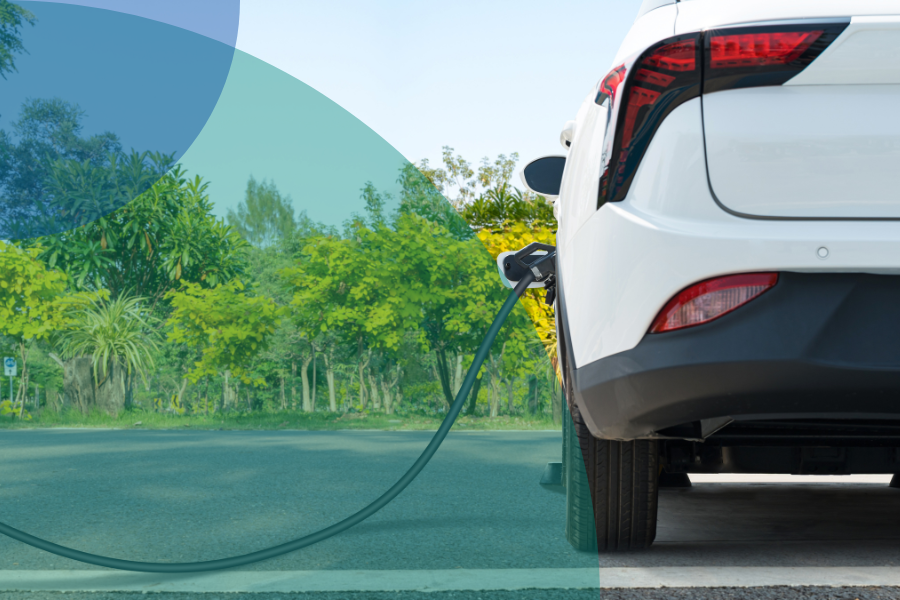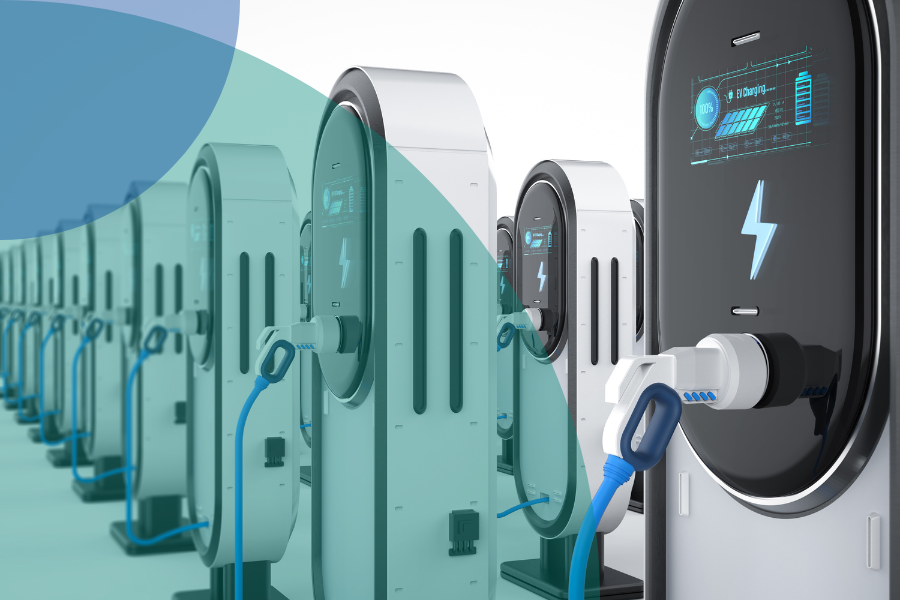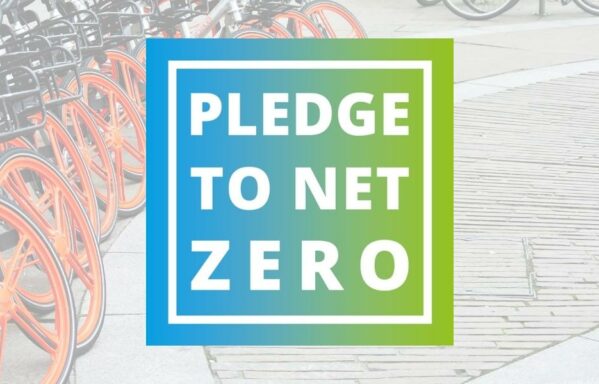‘I heard that storage batteries can’t be recycled and just end up creating more waste.’
or
‘I heard that because of batteries, EVs are worse for the climate than petrol cars.’
or
‘I heard that mining for battery components is linked to human rights abuses’.
Maybe you have heard similar comments made by friends, family or colleagues? Maybe you read something along these lines somewhere? And maybe this has created doubt in your mind about the role that batteries, both for the home and electric vehicles (EVs), can or should play in the switch to clean energy?
I have certainly heard such comments and was motivated to take a closer look at what is going on. Battery storage technology is a fast moving and huge topic, so this is just a snapshot, but it should help us, as environmental professionals, to respond correctly. Let’s start with the exciting stuff!

Did you hear? Electric Vehicle battery storage opportunities, challenges and (mis)information
Did you hear that Volkswagen is listed on the German electricity market[i] – the EPEX Spot power exchange?
It is the first time a car company has done this. They are taking batteries from old VW EVs and charging them when electricity prices are low and selling the electricity back to the grid when prices are high. They can profit from this arbitrage, they help balance the grid and they extend the use of EV batteries when the car has reached the end of its commercial life. VW are even leasing their cars so that they can maintain battery ownership and keep open the opportunity to use them for various purposes after the EV.[ii]
Did you hear that upwards of 99% of battery materials can be reused over and over again?[iii]
The valuable cathode elements in batteries (lithium, nickel, manganese, and cobalt) are typically shredded in end-of-life batteries, creating a ‘black mass’. This is now being turned into ‘black gold’ by innovative companies such as RecycLiCo who are recovering almost all of these materials and upcycling them into battery-grade cathode material and lithium that can be used again in the battery manufacturing process. The batteries made from those recovered materials have, quite literally, been proven to be as good as new.
Did you hear that innovation in battery reuse and recycling is spreading across Africa?[iv]
SLS Energy in Rwanda is using old batteries to power telecommunications towers. Enverse is developing a battery inventory management system using industrial data analytics. Both businesses are partnered with Hinckley Recycling – Nigeria’s first government approved e-waste recycling plant.
Did you hear that over a typical vehicle’s lifetime, EVs produce significantly less emissions than internal combustion engine (ie petrol) vehicles?[v]
EVs start life with higher emissions because of the energy required to extract and refine battery minerals, however EVs have on average half of the lifetime emissions of internal combustion engine vehicles. Emissions of EVs will fall further as power supplies gets cleaner.
Did you hear that over a million children are engaged in child labour in mines and quarries for cosmetics, electronics, construction, automobiles, banking and jewellery? [vi]
Many children receive little to no pay. These practices are a form of modern slavery and need to be stamped out everywhere, whatever industrial usage the minerals are for.

Challenges of battery storage
The main challenges in scaling up battery storage and usage in the clean energy transition are not technological, and as markets scale and innovators continue to improve products and services across the world, the commercial challenges are falling away.
More serious are the environmental and human rights challenges that our current economic and social systems create. As consumers (and environmental professionals) we must demonstrate consistent standards of expectations for environmental and social justice and not ‘cherry pick’ the industries we critique or turn a blind eye to, based on our personal preferences and ideologies.
Sources of information
One challenge that is less obvious but hugely important in debates about batteries, is the challenge of misinformation. It is incumbent on us to seek reliable, verifiable information before accepting hearsay. The child labour information in this article comes from the International Labour Organisation.
The VW information is available direct from VW. RecycLiCo is one of many solutions supported by the US Department of Energy through a $7billion programme to improve battery sustainability[vii]. The African solutions are supported by UK Government funding. The lifecycle emissions information is from the International Energy Agency.
Whenever I hear someone commenting about batteries, before getting into the details, I try and find out what their comments are based on. Verifiable evidence from reliable sources, and consistency in using it, are critical to the integrity of our profession as environmentalists, for batteries and for everything we work on. We should seek to understand our own sources as well as those of the stakeholders we engage with.
The Critical role of batteries
Considerations regarding the sustainability of batteries do not exist in a vacuum. The need for a rapid scale up in battery deployment is overwhelmingly driven by the need to urgently reduce greenhouse gas emissions. The principal solution to decarbonising buildings, transport and industry is electrification. Three times more zero carbon electricity is needed[viii].
Solar and wind are the cheapest renewables[ix] but they are variable, hence the role of batteries in balancing supply and demand. Lithium batteries are not the only solution of course, however alternatives need to be both economical, reliable and ESG compliant. For example, whilst nuclear provides more constant power than solar and wind (notwithstanding the affect of heat waves in reducing efficiency and increasing curtailment[x]), consideration also needs to be given to the risk of contamination and the possibility of nuclear capability diffusing into security affairs.
Green hydrogen is another form of storage, however it requires significant amounts of renewable energy that are not (yet) available (other uses are more economical). CCUS can help decarbonise fossil fuel use however it is still uncompetitive and leakage risks, for example from flooding, need to be managed. The infrastructure for all of these solutions relies on metals and minerals that are mined and also need to be recycled at the end of their life.
There is no solution that is free of ESG risk. Perhaps the most important question of all is whether ESG risks relating to solutions for reducing greenhouse gas emissions should be subservient to or above the risk of destabilising the planet’s climate system? The answer, I suspect, is more moral than empirical. That would certainly lead to a very different kind of conversation the next time someone says they heard that batteries can’t be recycled.
Resources for more Electric vehicle battery information:
[i] Volkswagen Group and Elli launch electricity trading on the European energy exchange | Volkswagen Group (volkswagen-group.com)
[ii] Volkswagen Says It Will Lease Used EVs To Maintain Control Over Its Batteries – CleanTechnica
[iii] RecycLiCo – RecycLiCo Battery Materials
[iv] Hinckley Recycling and Global Alliance Africa find Innovative Approaches to Battery Recycling in Nigeria – Innovate UK KTN (ktn-uk.org)
[v] Comparative life-cycle greenhouse gas emissions of a mid-size BEV and ICE vehicle – Charts – Data & Statistics – IEA
[vi] Child labour in mining and quarrying (IPEC) (ilo.org)
[vii] Biden-Harris Administration Awards $2.8 Billion to Supercharge U.S. Manufacturing of Batteries for Electric Vehicles and Electric Grid | Department of Energy
[viii] New Energy Outlook 2022 | BloombergNEF | Bloomberg Finance LP (bnef.com)
[ix] Renewable Power Generation Costs in 2022 (irena.org)
[x] Increase in frequency of nuclear power outages due to changing climate | Nature Energy
Article written by Dan Hamza-Goodacre CEnv, Founder and Chief Energy Officer of Integrate to Zero.
Want more?
Watch Dan’s Green Leaders in Action video here:
Statements on this blog reflect the views and opinions of the author(s) credited and they do not always represent the views or policies of SocEnv. The blogs shared on the SocEnv website are intended to be thought-provoking articles for informative and educational purposes only.
Share this page
More from SocEnv

Chartered Environmentalist
The globally recognised gold standard for demonstrating your knowledge and commitment to high standards of practice and professionalism.


Pledge to Net Zero
SocEnv are proud to one of the founding signatories of Pledge to Net Zero: turning climate ambitions into tangible, science-based action.


Knowledge Hub
A hub of trusted information and expertise, insight, guidance and advice to benefit all in the environmental professions and beyond.


CEnv, REnvP and REnvTech opportunity | contribute to the Knowledge Hub
We're looking for volunteers to produce original content for the Knowledge Hub - such as blogs, articles and case studies.



